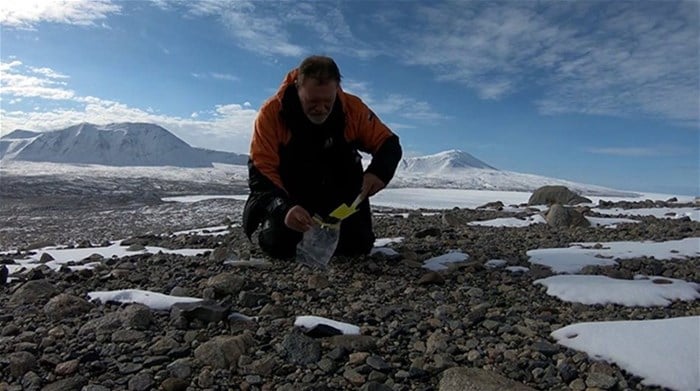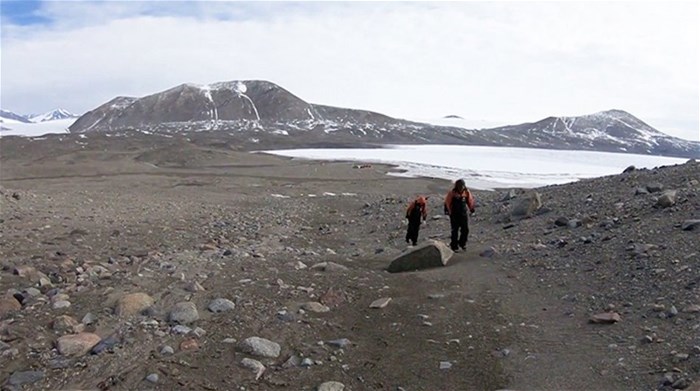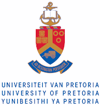Researchers at the University of Pretoria (UP) have taken this knowledge further with their discovery that the cold, dry soils of Antarctica is home to several million microorganisms.
The Dry Valleys of East Antarctica are the most extreme example of polar soils; these valleys are arguably the coldest and driest deserts on Earth. About 50 years ago, it was thought that these cold desert soils contained only a limited diversity of specialised species of microorganisms. In fact, initial analyses, done about four decades ago, estimated that there were only a few to a thousand microbial cells per gram of Antarctic soil.
However, Professor Don Cowan, director of the Centre for Microbial Ecology and Genomics at UP, and his research team have shown that these cold, dry soils harbour much greater populations of microorganisms: perhaps 1 to 10 million cells per gram of soil. As a comparison, temperate, nutrient-rich agricultural soils typically contain about 100 million cells per gram.
“The use of modern environmental genetics, using eDNA – which is all the DNA that can be extracted from an environmental sample, and which provides access to all the organisms in that sample – has painted a completely different picture of the microbial landscape,” Prof Cowan explains. His lab was one of the first to use eDNA methods on Antarctic soils, and to demonstrate that these cold, dry soils contained a high diversity of bacterial fungal and viral species, very few of which have ever been isolated as pure cultures.
Prof Cowan’s work demonstrates that the microorganisms found in the 1970s were those that were easy to grow on simple culture plates. “The eDNA studies showed that these fast-growing ‘microbial weeds’ were not the dominant microorganisms, but were mostly rare members of the microbial community,” Prof Cowan says. “The use of eDNA, together with phylogenetic marker analyses, allows us to identify all the microorganisms in the soils, whether they are common or rare. This is where big data and bioinformatics become really critical.”
Microbial life can be found in a wide variety of niches of Antarctic deserts. The really interesting ones are the “lithic” niches, where microbial communities are associated with rocks. Hypolithic communities – microbial communities living on the undersides of translucent quartz or marble pebbles embedded in desert pavement – are common. This is a specialised niche habitat with a favourable micro-environment, where the overlying rock protects the microorganisms on the underside from damaging ultra-violet light, buffers extreme temperature changes – particularly by limiting freeze-thaw cycles, which are damaging to cells – and increases the water available to the microbial community.
How do cold desert microbes get water?
Although about 97% of Antarctica is covered with glacial ice, the remaining 3% is mostly ice-free. The largest ice-free area is the McMurdo Dry Valleys, an area of about 150km x 30km of mountains and valleys that consist mainly of exposed gravel, sand and rock.
This area is much warmer than the icy interior, with summer temperatures ranging from -15°C to around 0°C. Winter temperatures drop to about -60° C. This area is a true cold desert and the soils, the home of the microorganisms, are extremely dry.
The soil water content in these areas is very low – typically, less than 1%. There is often water in the permafrost, between 30cm to 90cm below the surface, but this water is frozen and unavailable to surface microbes. Occasional snowfall moistens the surface soils, but only down to a centimetre or so. “It never rains in the Dry Valleys,” Prof Cowan says.
Some Antarctic soil microorganisms were recently discovered to use atmospheric hydrogen (a “trace” gas) as an energy source. The oxidation of hydrogen produces water, raising the exciting possibility that hydrogen-using Antarctic soil microorganisms “make” their own water. “The importance of hydrogen oxidation in supplying water to soil microbial communities is not yet known, but it is an intriguing and interesting question,” Prof Cowan says.
What about climate change?
“There is powerful evidence that the continent is warming, with associated loss of glacial ice mass,” Prof Cowan explains. “Local conditions will change. How the Dry Valleys will change is not completely known, but temperature rise will increase glacial ice melt and liquid water flows, though increasing cloud cover and snowfall may have the effect of decreasing mean summer temperatures. Nevertheless, change is happening, and the issue of the resilience of microbial and other biological communities is a current focus. Whether microbial communities will adapt, change, die out or be replaced by others is still an open question.”
Despite its remote location, Antarctica remains a vitally important continent. Its ice mass is enormous, and melting continental ice will have dramatic effects on oceanic flow patterns and global seal levels. Antarctica is also the last “pristine” continent in that it remains largely unaffected by human activity, which is why conservation is imperative.
“In order to conserve, you must understand what you are conserving,” Prof Cowan says. “Further studies on the indigenous biology of the continent and its surrounding oceans are therefore critically important. Such studies are even more urgent in light of the current impacts of climate change, as both the continent and its ‘inhabitants’ are forced to change with changing global temperatures.”
The organisms in Antarctic soils have to survive extreme conditions, and the molecular adaptations that allow them to do so can be unique and help us to understand the mechanisms of survival of life on Earth, Prof Cowan adds.
Watch the webseries in the sidebar to learn more or view the gallery to experience a day in the life of a research scientist.
Prof Don Cowan




































